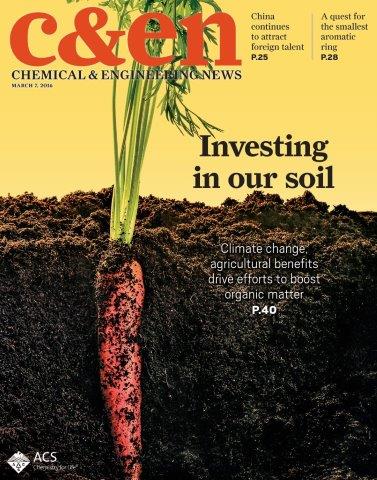FOR IMMEDIATE RELEASE
ACS News Service Weekly PressPac: March 09, 2016
Turning to dirt as part of the climate change solution
"Regenerating Degraded Dirt"
Chemical & Engineering News
Dirt is easy to take for granted if you’re not a farmer or gardener. But increasingly, governments are looking to soil as part of the solution to curbing climate change. Widespread changes to agricultural practices could help sock away carbon emissions, but will farms make the shift? The cover story of Chemical & Engineering News (C&EN), the weekly newsmagazine of the American Chemical Society, digs into the matter.
Britt Erickson, a senior editor at C&EN, notes that soil is an effective carbon sink. Carbon gets pulled from the air into plants or crops, which then release it into the soil through their roots. Encouraging soil to do more of this through different farming practices has the potential to offset 5 to 15 percent of current global fossil-fuel emissions. Although this idea is not new, it seems to finally have gained some traction. Apart from the climate change agreement reached in Paris last year, France, Peru and the United Nations launched another international initiative that aims to boost the amount of carbon in soils globally by 0.4 percent per year. Although the United States is not a party to that effort, it plans to use agricultural and forestry practices to put away more than 120 million metric tons of carbon dioxide equivalent by 2025. It is also investing in research into the best soil management practices.
But the question remains: Will private farms change their ways to help store carbon on their land? Some farms have already instituted strategies to enhance the organic matter in their soils, which in effect boosts its carbon content. Aside from the sequestration function, they say the measures — such as planting cover crops and no-till farming — have direct benefits to farmers. They prevent soil from getting soggy, reduce run-off and could potentially make farms more resilient to drought. However, these advantages haven’t yet resulted in what many consider the ultimate measures of successful farming practices: higher crop yields and profits.


